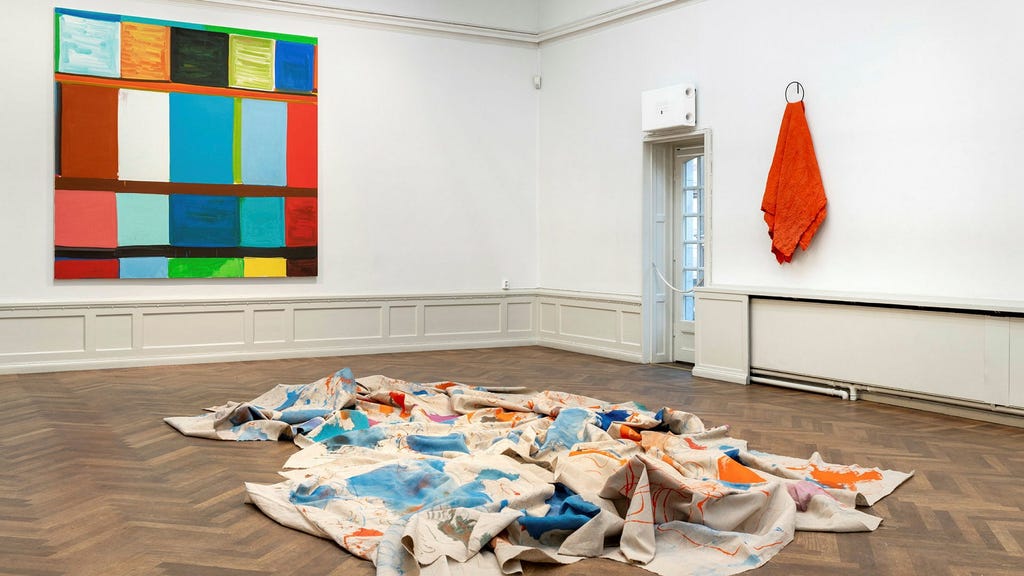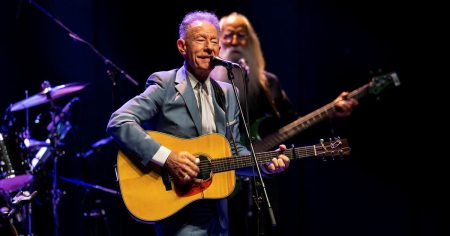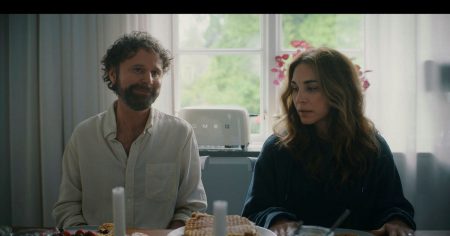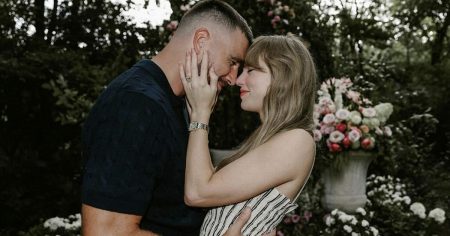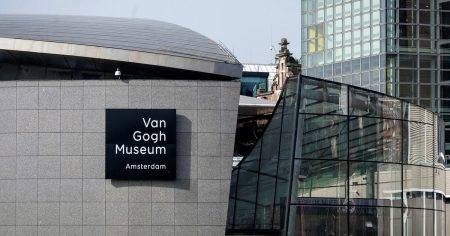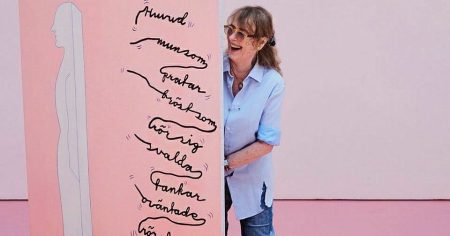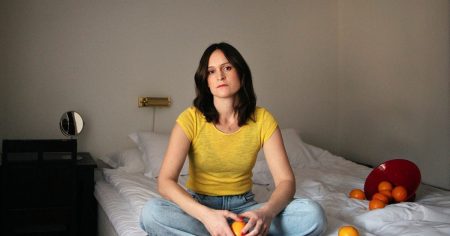The exhibition ”Concrete Interest” at Konstnärshuset in Stockholm showcases a vibrant dialogue between the works of American artist Stanley Whitney and four Swedish contemporary artists: Monica Höll, Sigrid Sandström, Anton Lind, and Katarina Andersson. Whitney’s large-scale painting ”Thunderbird” acts as the centerpiece, its grid-like composition and rich color palette setting a welcoming tone for the entire exhibition. This vibrant work, reminiscent of a gracious host at a dinner party, engages with the surrounding artworks, creating a harmonious interplay between the artists. The horizontal lines of Whitney’s painting visually extend into the space, embracing the other works and fostering a sense of interconnectedness.
Whitney’s signature style, characterized by soft yet distinct grids of color fields, pulsates with a contagious rhythm. The confident execution of his paintings invites viewers to engage deeply, nodding in agreement with the visual language presented. The placement of ”Thunderbird” strategically balances the exhibition space, its multitude of colors providing a visual anchor for the other artists’ works. This curatorial decision cleverly uses Whitney’s star power and the inherent joy his work exudes to unify the diverse artistic expressions within the exhibition.
The four Swedish artists, though distinct in their approaches, share a common thread of non-figurative or abstract expression. Monica Höll’s ”Heritage,” a large, wrinkled linen canvas awash in orange and blue hues, occupies the center of the floor, its presence both commanding and organic. Anton Lind’s layered paintings, with their bubbling forms hinting at familiar art historical motifs, introduce a dynamic energy. Sigrid Sandström’s contributions, captured in the accompanying photographs, further enrich the exhibition’s visual tapestry. Despite the apparent disparities in style and medium, the placement of these works alongside Whitney’s creates a surprisingly cohesive narrative.
Katarina Andersson’s egg tempera paintings, displayed on a partition and the opposite wall, offer a contrasting yet complementary experience. Her muted color palettes and strictly rectangular forms create a quiet drama, inviting contemplation. These minimalist compositions, while potentially interpretable as implied spaces, primarily convey a serene acceptance of existence and life. Andersson’s works act as a counterpoint to the exuberance of Whitney’s and others, offering moments of pause and reflection within the exhibition’s overall dynamic.
The unexpected harmony achieved in ”Concrete Interest” is remarkable, given the potential for conflict between such diverse artistic approaches. However, instead of clashing, the works engage in a harmonious exchange, much like a conversation between cherished friends. The exhibition’s success lies not only in Whitney’s unifying presence but also in the careful interplay between all the artists. While a larger exhibition might have benefitted from some dissonance or contrasting elements, the intimacy of ”Concrete Interest” allows for a pure and undiluted enjoyment of the artistic dialogue. The experience avoids feeling overcrowded or overwhelming, preserving a sense of intimacy and allowing the viewer to fully appreciate the nuances of each artwork.
”Concrete Interest,” then, presents a nuanced exploration of abstract and non-figurative art. It skillfully navigates the potential pitfalls of combining diverse artistic voices, creating instead a cohesive and engaging experience. The exhibition showcases not only the individual strengths of each artist but also the power of artistic dialogue to create something greater than the sum of its parts. The result is an exhibition that resonates with a quiet confidence, inviting viewers to immerse themselves in the interplay of color, form, and artistic expression. The thoughtful curation and balanced presentation transform the exhibition space into a vibrant forum for artistic exchange, enriching the viewer’s experience with a sense of shared discovery.





